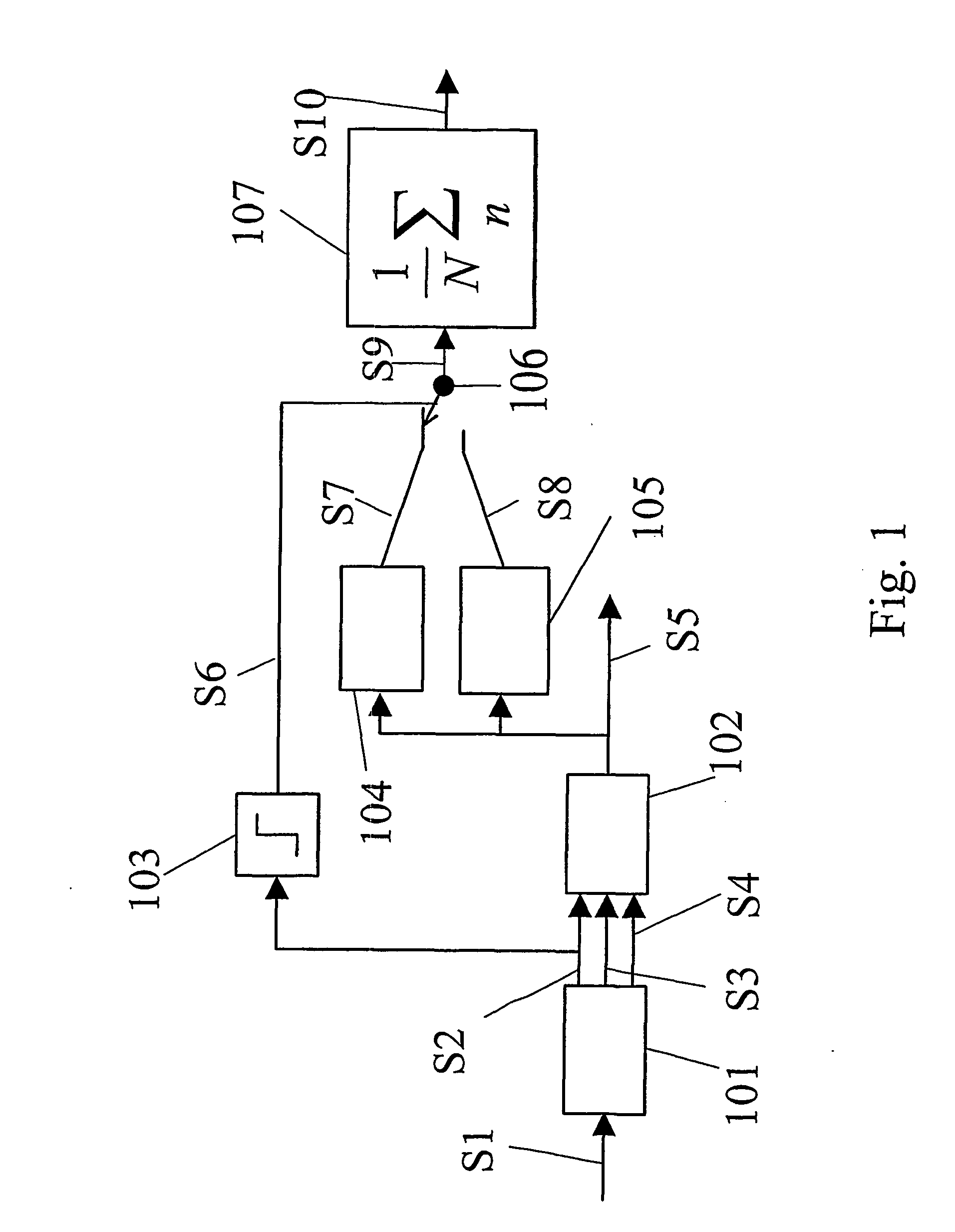Method and device for calculating bit error rate of received signal
a bit error rate and received signal technology, applied in error detection/correction, instruments, coding, etc., can solve the problems of multi-path fading, complex task of optimal decoding of turbo codes, and need for mechanisms, so as to reduce the load on the receiver, reduce the complexity of the circuit, and reduce the effect of memory limitation
- Summary
- Abstract
- Description
- Claims
- Application Information
AI Technical Summary
Benefits of technology
Problems solved by technology
Method used
Image
Examples
Embodiment Construction
[0032] The present invention will now be described more fully hereinafter with reference to the accompanying figure, in which the preferred embodiment of the invention is shown.
[0033] The Bit Error Rate (BER) calculation method and system of the present invention is used in a digital communication system and more precisely in the receiver station of the digital communication system.
[0034] As known by those persons skilled in the art, the receiving station includes a receiver (not shown), demodulator (not shown), demultiplexer 101 and a decoder 102. The demodulator (not shown) produces a data stream consisting of soft bits S1. The demultiplexer splits this stream into the soft systematic input S2 and one or more soft parity inputs S3, S4. Streams S2, S3 and S4 are input to the decoder 102.
[0035] The decoder 102, upon receiving a complete data block, processes the inputs and produces soft-output S5 representing the likelihood of a received bit in the data frame being a logical 1 or...
PUM
 Login to View More
Login to View More Abstract
Description
Claims
Application Information
 Login to View More
Login to View More - R&D
- Intellectual Property
- Life Sciences
- Materials
- Tech Scout
- Unparalleled Data Quality
- Higher Quality Content
- 60% Fewer Hallucinations
Browse by: Latest US Patents, China's latest patents, Technical Efficacy Thesaurus, Application Domain, Technology Topic, Popular Technical Reports.
© 2025 PatSnap. All rights reserved.Legal|Privacy policy|Modern Slavery Act Transparency Statement|Sitemap|About US| Contact US: help@patsnap.com



